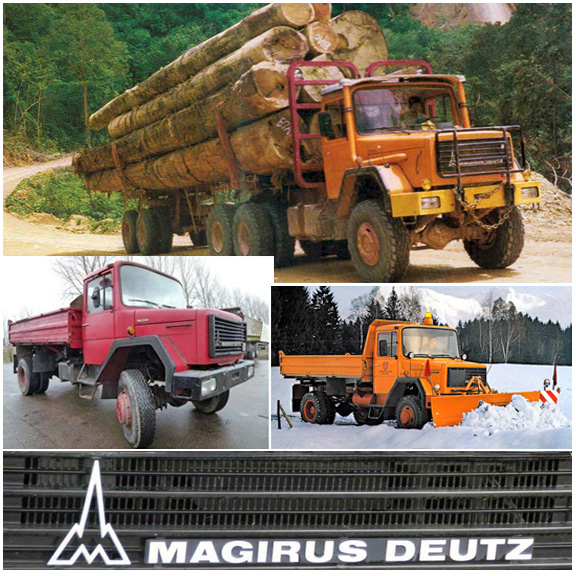Magirus-Deutz trucks, a rare sight on American highways in the 1970s, trace their roots back to 1866 when Conrad Dietrich Magirus founded the company in Ulm, Germany. Originally focused on building fire apparatus, Magirus became part of Klöckner Humboldt Deutz (KHD) AG in 1936, tying its history to Nicolas Otto, the inventor of the internal combustion engine. The company gained a reputation for rugged designs and the reliable Deutz air-cooled engines.
Magirus Trucks Cross the Atlantic
In 1977, Mack veteran Ray Reardon saw potential in bringing Magirus trucks to the U.S. As the
founder of Iveco Trucks of North America, he introduced medium-duty models like the 160A11FL and 200A13FL. These trucks combined German engineering with Fiat liquid-cooled engines and featured the innovative "Club of Four" cab, designed in collaboration with Volvo, DAF, and Saviem.
Magirus trucks found a foothold in several U.S. industries:
Municipal Services: Trusted for tasks like refuse collection, snow removal, and utility work.
Construction: The 200A13FL was a reliable option for light construction fleets.
Logging: With robust engines, advanced brakes, and strong rear axles, the 200A13FL proved capable of tackling steep grades and heavy payloads.
What Set Magirus Trucks Apart
Magirus trucks brought several distinctive features to the U.S. market:
"Club of Four" Cab Design: Developed with European partners, this cab offered sleek styling and
improved visibility, standing out from bulkier American designs.
Fiat Liquid-Cooled Engines: While European models often used Deutz air-cooled engines, the U.S. versions featured Fiat liquid-cooled powerplants, balancing performance with practicality.
Advanced Braking Systems: Options like air-over-hydraulic brakes on the 160-series and full-air
brakes on the 200A13FL ensured strong stopping power, especially for heavy-duty applications.
Heavy-Duty Axles: High rear-axle ratings, such as 20,300 lbs on the 200A13FL, made these trucks suitable for hauling heavy loads.
European Design Philosophy: Focused on efficiency and versatility, Magirus trucks offered a compact alternative to traditional American models.
Specifications at a Glance
Magirus-Deutz trucks imported to the U.S. delivered solid performance:
160A11FL: 160 horsepower, 17,500 lb rear axle, air-over-hydraulic brakes.
160A13FL: 160 horsepower with an upgraded 20,300 lb rear axle.
200A13FL: 200 horsepower and featuring full-air brakes and a rugged chassis for demanding work.
Despite their strengths, Magirus trucks had a limited run in the U.S. By 1980, Mack’s Mid-
Liner—developed with Renault—dominated the market, and Magirus models faded from view, with their presence ending by the late 1980s.
Magirus trucks may have had a brief chapter in the U.S., but they left an impression with their engineering and adaptability. Today, the Magirus name lives on as part of Iveco, continuing to specialize in fire apparatus and upholding its tradition of innovation.
